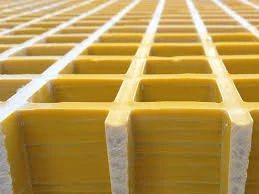loading...
- No. 9, Xingyuan South Street, Dongwaihuan Road, Zaoqiang County, Hengshui, Hebei, China
- admin@zjcomposites.com
- +86 15097380338
- Welcome to visit our website!
Innovative Fiberglass Mesh Solutions for Durable Walkways and Safe Outdoor Living Spaces
The Advantages of Fibreglass Walkway Mesh
In various industries and applications, safety and functionality are paramount. One product that has gained significant traction in enhancing safety and utility in walkways is fibreglass walkway mesh. This innovative material combines strength, durability, and a lightweight design, making it ideal for a range of environments. In this article, we will explore the benefits of fibreglass walkway mesh and its diverse applications.
What is Fibreglass Walkway Mesh?
Fibreglass walkway mesh is a type of composite material made from a reinforcement of glass fibers and resin. This combination results in a robust yet lightweight structure that can be molded into various shapes and sizes. The mesh design allows for excellent drainage and minimizes the risk of slips and falls, making it particularly suitable for environments where safety is crucial.
Benefits of Fibreglass Walkway Mesh
1. Durability and Corrosion Resistance One of the standout features of fibreglass walkway mesh is its exceptional durability. Unlike traditional materials like metal or wood, fibreglass is resistant to corrosion and environmental degradation. This characteristic makes it an ideal choice for outdoor applications or areas exposed to chemicals, moisture, or extreme weather conditions. As a result, fibreglass mesh has a long lifespan, reducing the need for frequent replacements and maintenance.
2. Lightweight Properties Fibreglass walkway mesh is significantly lighter than metal alternatives, facilitating easier installation and transportation. This weight advantage translates to reduced labor costs and quicker project timelines, as fewer resources are needed to handle and install the product. Additionally, the lightweight nature of fibreglass allows for the creation of walkways in locations where heavier materials would be impractical.
3. Non-Conductive and Non-Magnetic For environments such as electrical plants or areas with sensitive equipment, fibreglass walkway mesh offers the added advantage of being non-conductive and non-magnetic. This property ensures that there is no risk of electrical hazards and makes fibreglass an optimal choice for walkways in high-tech manufacturing settings or near electrical installations.
fibreglass walkway mesh

4. Enhanced Safety Features Safety is perhaps the most significant concern in any environment requiring walkways. Fibreglass walkway mesh inherently provides a non-slip surface, reducing the likelihood of accidents due to slipping. Furthermore, its open mesh design allows for excellent drainage, preventing water accumulation and ice formation, which can lead to hazardous conditions.
5. Eco-Friendly Solution As sustainability becomes increasingly important in industrial practices, fibreglass walkway mesh stands out as an eco-friendly option. Many manufacturers focus on sustainable production methods, and fibreglass can often be recycled at the end of its life cycle. By choosing fibreglass mesh, industries can contribute to reducing waste and promoting environmental responsibility.
Applications of Fibreglass Walkway Mesh
The applications of fibreglass walkway mesh are vast and varied. It is extensively used in
- Industrial Plants Providing safe access in manufacturing areas where chemicals or heavy machinery are present. - Marine Environments Ideal for docks and piers where water exposure is a constant factor, fibreglass walkways resist corrosion from saltwater. - Power Generation Facilities Where electrical insulation is crucial, fibreglass offers a safe solution. - Public Spaces Parks and recreational areas benefit from the lightweight and durable nature of fibreglass walkways, thus enhancing visitor safety.
Conclusion
Fibreglass walkway mesh is a revolutionary product that offers numerous benefits across various sectors. From its durability and lightweight properties to enhanced safety features and eco-friendliness, it presents a modern solution to traditional walkway materials. As industries continue to prioritize safety, sustainability, and efficiency, fibreglass walkway mesh will undoubtedly play a critical role in shaping the future of walkways in numerous environments.
-
The Rise of FRP Profiles: Strong, Lightweight, and Built to LastNewsJul.14,2025
-
SMC Panel Tanks: A Modern Water Storage Solution for All EnvironmentsNewsJul.14,2025
-
GRP Grating: A Modern Solution for Safe and Durable Access SystemsNewsJul.14,2025
-
Galvanized Steel Water Tanks: Durable, Reliable, and Ready for UseNewsJul.14,2025
-
FRP Mini Mesh Grating: The Safer, Smarter Flooring SolutionNewsJul.14,2025
-
Exploring FRP Vessels: Durable Solutions for Modern Fluid HandlingNewsJul.14,2025
-
GRP Structures: The Future of Lightweight, High-Performance EngineeringNewsJun.20,2025
